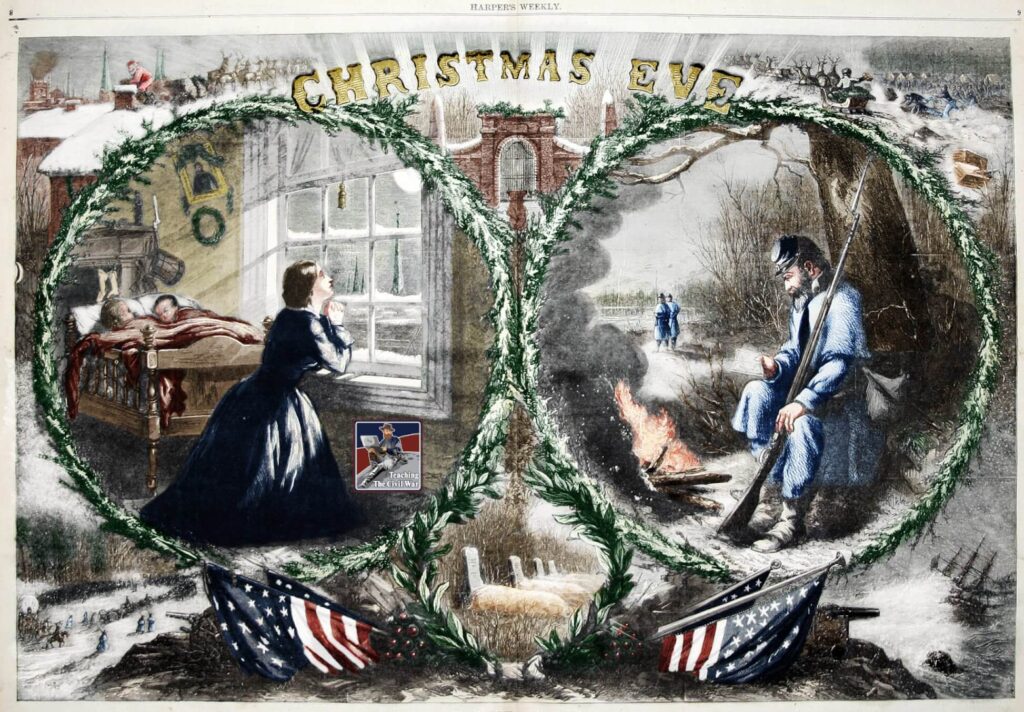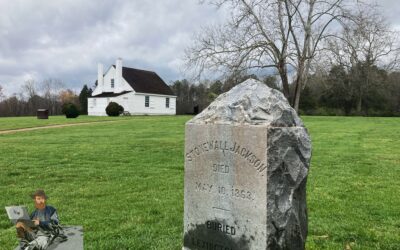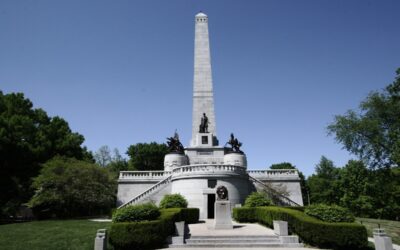
My colorization of the original image
Thomas Nast’s Christmas Eve compelled people to face the challenges of a wintry season overshadowed by the ravages of war. Originally sketched in 1862, the illustration graced a significant portion of the January 3, 1863 edition of the widely circulated illustrated newspaper, Harper’s Weekly. Nast’s artistry presented a poignant narrative, intertwining various scenes that captured the essence of Christmas in the midst of conflict. Notably, Santa Claus spread joy both to those on the home front and to soldiers on the battlefield, while simultaneously illustrating soldiers trudging through snow, ships battling fierce gales, and military graves solemnly adorned with the U.S. flag.
Regarded as one of the earliest depictions of American traditions associated with Christmas, the illustration primarily conveyed a theme of separation and sacrifice. It served as a profound reflection on the struggles endured by ordinary individuals swept up in an internal conflict, all during a time when peace and familial bonds were traditionally celebrated.
The central focus of the illustration is a poignant portrayal of two separate realities – the family left at home and the military picket line. Despite their physical proximity, a noticeable divide persists between them. On the left side, a woman kneels by a window, her hands clasped in prayer, while her children sleep peacefully in their bed. In contrast, the military scene on the right depicts a Federal soldier huddled by a small fire, flanked by two comrades standing guard in the distance. The image suggests that he is a husband and father separated from his family due to his unwavering commitment to his nation. If you look closely you can see a framed photograph of the soldier hanging above the children’s bed, symbolizing his presence in their lives. Similarly, the absent soldier gazes longingly at a photographic case containing images of his beloved wife and children.
Encircling the central pair of images are a diverse array of scenes. Positioned in the upper left corner is an illustration of Santa Claus descending into a chimney. In the bottom left, a depiction of soldiers trudging through the snow captures the eye. Meanwhile, the upper right corner showcases yet another portrayal of Santa, this time in a sleigh being drawn by a team of reindeer. This image stands as an early representation of the beloved Christmas customs.
Moving to the lower right corner, turbulent waters toss ships around, creating a sense of turmoil. Finally, the lower center scene portrays the solemn graves of fallen soldiers, a poignant reminder of the sacrifices made during wartime.



0 Comments